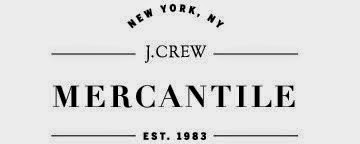Advice on how to create your personal brand is abundant. Unfortunately, much of it is only partially correct or in some cases, flat out wrong. For example, I wish I had a dollar for every tweet or blog post touting the importance of visual elements used in personal brand communication. Don’t get me wrong, I agree that your personal headshot, website theme, and imagery used are important branding elements. People associate those visuals with you and your brand.
The problem with advice like this is it is often presented as if it is the secret to personal branding success. Do this one thing and you’re set, or follow these four steps to create your personal brand. Sorry, it is not that simple. You are never completely finished building your brand.
I observed another instance of problematic advice recently as I scrolled through my Twitter feed. The tweet was simple:
Give people a positive reason not to forget you! Choose to stand out!
The core message is spot-on. Brands serve to differentiate an offering from others. The caveat of this advice is qualifying how one should stand out. The visual accompanying this tweet was an image of a carton of white eggs. In the midst of the white eggs was a single colored egg. It definitely stood out surrounded by plain colored eggs.
The danger with the advice to stand out is that it can define differentiation in shallow, physical terms. Some personal branding experts advocate this practice, creating a memorable brand in the process. For example, some people have made colorful pocket squares or scarves a signature element of their personal brand. Others remember them (i.e., they stand out) because of their distinctive attire. Being remembered by others is a good thing; a brand with insufficient awareness among the target market is nothing more than a well-kept secret… not a desirable brand characteristic. However, using an observable attribute as your basis for standing out can be easily negated. The greater limitation is that such a focus does not communicate your real value or worth to others.
Two Sources of Brand Differentiation
Standing out is essential in today’s hyper-competitive environment. We are hard-pressed to think of brands that do not have competition. You can position your brand to stand out by using one of two approaches. Using a standout feature to create a distinguishing brand trait can create a memorable association that puts a brand above competitors. For example, content marketing expert and author Joe Pulizzi usually will be wearing orange when you see him in action. He has associated the color with his professional persona and incorporated into branding on his website. In a noisy world in which it is challenging to get attention, standout feature differentiation can make the difference between recognition and anonymity.
Using a standout feature as the sole basis for brand positioning suffers from one significant limitation: It does not answer the question “what’s in it for me?” You wear red shoes all the time? That’s nice, but how does that impact how you serve me? These questions are typical of what we ask ourselves when a company or person is selling to us. We have no need for colorful accessories or a unique hairdo.
We seek benefits that offer convenience, comfort, growth, or some other positive impact. Thus, brand positioning should also include a second dimension, a standout benefit. While standout features are optional for differentiating a brand, communicating a standout benefit is not. The benefit provided associated with your brand answers the “what’s in it for me” question. If your target audience cannot discern a benefit offered, you may be perceived as little more than a commodity that is easily replaced or substituted.
What Matters to Them
The importance of brand positioning with a standout benefit is an easy sell. Figuring out the benefit that is your point of difference can be more challenging. As you grapple with pinpointing your standout benefit, do not lose sight of how to find it. A standout benefit is something you do or create that helps others in some way. If you are unsure what it is, ask people you know well for their take on how you offer value. Sometimes, we do not realize how we affect others and the gratitude they feel toward us.
Finding your standout benefit does not mean to forget about including standout features into your positioning. Features can help your rise above the noise, but they will not keep you there. Couple benefits and features to develop a distinctive brand position.









